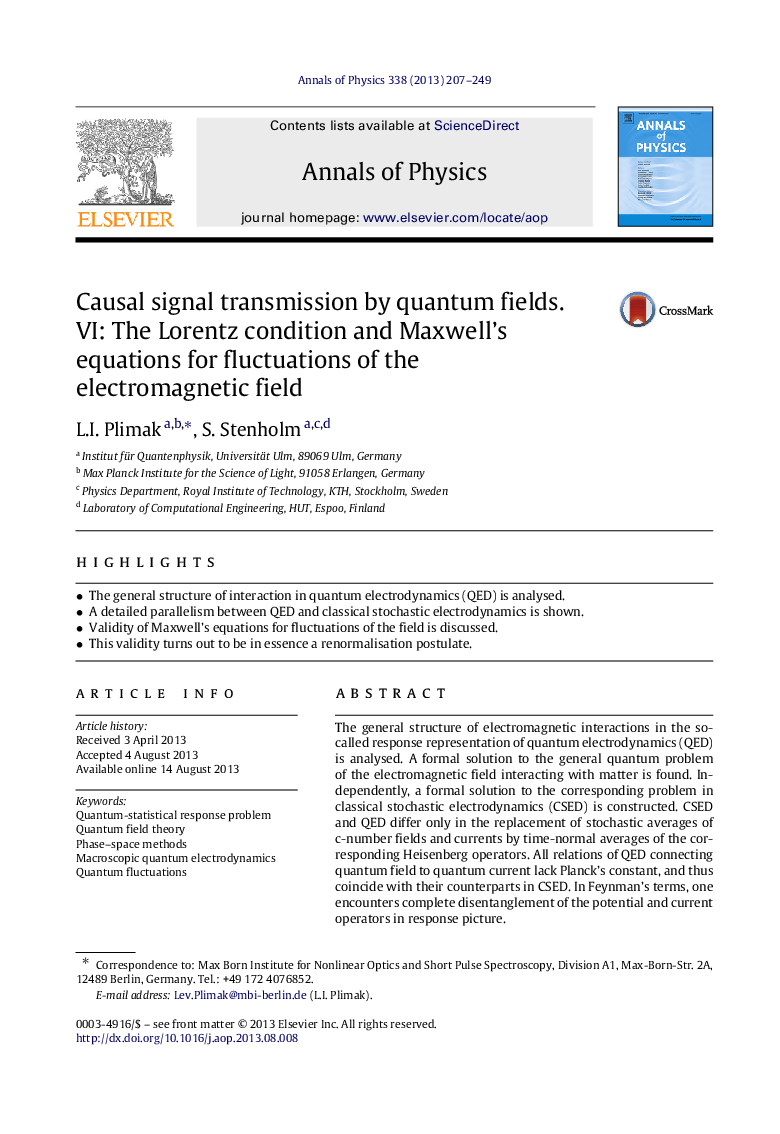| Article ID | Journal | Published Year | Pages | File Type |
|---|---|---|---|---|
| 1857424 | Annals of Physics | 2013 | 43 Pages |
•The general structure of interaction in quantum electrodynamics (QED) is analysed.•A detailed parallelism between QED and classical stochastic electrodynamics is shown.•Validity of Maxwell’s equations for fluctuations of the field is discussed.•This validity turns out to be in essence a renormalisation postulate.
The general structure of electromagnetic interactions in the so-called response representation of quantum electrodynamics (QED) is analysed. A formal solution to the general quantum problem of the electromagnetic field interacting with matter is found. Independently, a formal solution to the corresponding problem in classical stochastic electrodynamics (CSED) is constructed. CSED and QED differ only in the replacement of stochastic averages of c-number fields and currents by time-normal averages of the corresponding Heisenberg operators. All relations of QED connecting quantum field to quantum current lack Planck’s constant, and thus coincide with their counterparts in CSED. In Feynman’s terms, one encounters complete disentanglement of the potential and current operators in response picture.Based on this parallelism between QED and CSED, it is natural to expect validity of the Lorentz condition and Maxwell’s equations for the time-normal averages of the potential and current. Things however turn out to be more complicated. Maxwell’s equations under the time-normal ordering can only be demonstrated subject to cancellation of the so-called Schwinger terms by gauge-invariant regularisations. We presume this pattern to be general, formulating this as “commutativity conjecture”. Consistency of the latter with the Heisenberg uncertainty principle is discussed.
